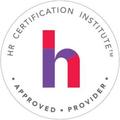Fostering a Culture of Talent Mobility - Leadership Development and Workforce Planning Exchanges

Enabling internal talent movement is a top retention strategy for many employers, supported by i4cp’s recent survey, Trends in the Rapidly Shifting Talent Landscape. Yet, according to i4cp’s Accelerating Workforce Readiness study, 43% of participants say managers often hoard high-performing talent. So how do organizations find the art and the architecture to support talent effectively? What are the tools and mindsets required to combine flexibility with career mobility to unleash a new wave of talent potential?
Watch the 16-minute presentation on Vertex's journey or the 8-minute presentation on Ecolab's journey.
4 things we explored.
Help them grow or watch them go. Talent mobility is a main driver of talent retention (or loss) and therefore is a strategic advantage. High mobility is associated with healthy cultures and high-performing organizations. Check out the Talent Mobility Guidebook and the Culture Fitness Report.
Employee led. Manager facilitated. Company enabled. Both Vertex and Ecolab are putting employees in the driver's seat of their own career. Both companies also run campaigns asking employees to opt in and share more about their skills and career aspirations.
Be a talent transporter, not hoarder. Successful mobility starts with leaders having an enterprise mindset and employees having a growth mindset. Then, organizations need to encourage and reward the right behaviors.
Highlight equity and transparency. In the past, not everyone has had an equal opportunity to grow and develop. Identify biases and find ways to overcome barriers. In addition to a mindset shift, bringing transparency to the process can help.
Q & A
Does anyone create a role specific to talent mobility? Or where does this "live"?
- We created 2 roles: 1 director and and 1 senior program manager, under talent development
- We have the Global Talent Manager and then a team of Talent Managers set by Divisions (Around 15 globally)
- Talent Acquisition informing HRBPs with our Ops team supporting the technology
- We have an entire team looking after talent architecture, which is a pre-cursor to our work on talent mobility. The talent architecture work sits in a COE in our Talent, Learning & Insights (TLI) org; it then has tentacles through our Talent Management org. And then we have our Career team also focused in parallel; they also sit in the TLI org.
How do you create a case for change?
- Show stakeholders that development is the number one driver of retention and the number two driver of engagement. In other words, not having career mobility is why you're losing talent.
- Reinforce the initative by sharing how many people were actually connected to an open role based on the numbers from our internal talent marketplace last year. Then, put a cost on that number if those individuals had left the organization rather than shifted roles. In this way, you can project cost savings.
What are some tools to boost adoption and engagement of the talent mobility tools/processes?
-
We have a development season. It's our annual way to nudge people a little bit and say, hey, it's really important for you to develop yourself, to develop your team and and help you. We really want you moving around, and we've leveraged that event.
-
We have several testimonies from employees that have gone through a gig, or who have been matched to a job, and how it's transformed and enabled them to grow their career.
log in







